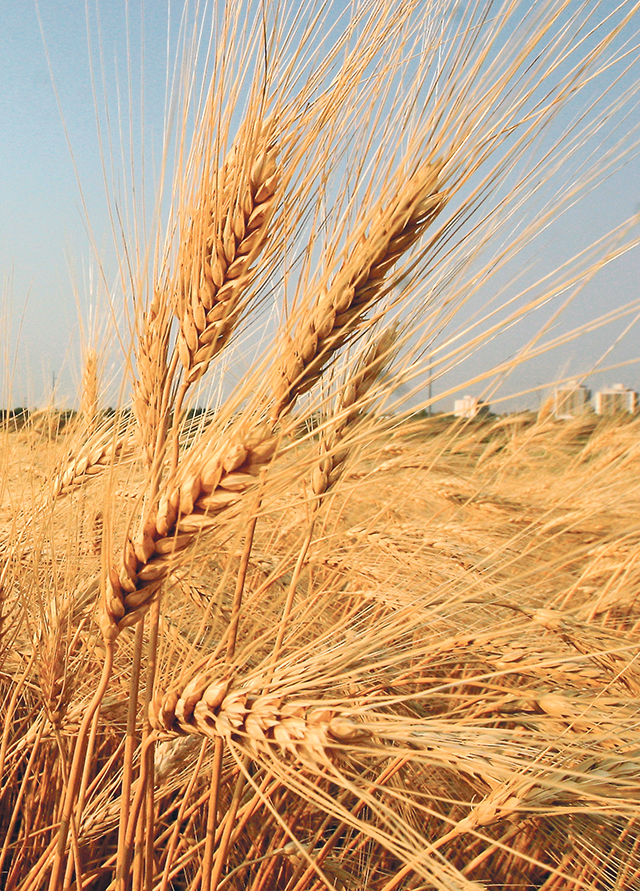It took a while, but durum prices are finally catching up to spring wheat prices because of shrivelling North American yield prospects.
Durum is grown in the heart of the U.S. drought area of North Dakota and Montana. The hot and dry conditions have taken a heavy toll on the crop.
In Canada, reduced acreage and dry weather will shrink the crop here as well.
The U.S. Department of Agriculture has issued its first official forecast. Its July report pegged production at 57.5 million bushels, a 45 percent decline from 2016.
Read Also

India slaps 30 per cent import duty on yellow peas
India has imposed a 30 per cent duty on yellow pea imports with a bill of lading date on or after Nov. 1, 2025.
Average yield for the United States is estimated at 30.9 bushels per acre, the lowest since 2006.
“It came in even lower than most of us were expecting,” said Erica Olson, marketing specialist with the North Dakota Wheat Commission.
 Canadian durum acreage is down 17 percent from last year and Agriculture Canada forecasts a 27 percent drop in production | File photo
Canadian durum acreage is down 17 percent from last year and Agriculture Canada forecasts a 27 percent drop in production | File photo
She described the situation in southwestern North Dakota as “dire.” Some farmers have already baled the crop for hay.
In the northwest it’s a mixed bag. Scorching heat last week knocked the amount of the state’s durum in good to excellent condition down to 14 percent from 24 percent the week before. In Montana, only four percent is good to excellent.
“Most of their production area is in a very, very dry situation, so their yield potential is probably even lower,” said Olson.
Durum prices did not follow the spring wheat bull run for a while because millers thought there was plenty of low quality carryout that could be blended with what is expected to be a good quality crop in 2017.
That was before they fully realized how much damage the drought has caused. On top of that, the USDA reported 36 million bushels of durum stocks as of June 1, down from the initial projection of 50 million bu.
“Your ability to blend is a lot less than the expectations were a few months ago. It has been a bit of an eye opener,” said Olson.
Old and new crop prices have responded, rising about US$2 per bushel in the last six weeks or so.
Bruce Burnett, director of markets and weather with Glacier FarmMedia, thinks the U.S. crop could turn out to be smaller than the USDA estimate.
“I wouldn’t be surprised if it’s less than that because the drought area is the durum area,” he said.
Canadian durum acreage is down 17 percent from last year, and yields will also be lower. Burnett believes production will drop by about 20 percent and maybe more depending on how the rest of the growing season evolves.
Agriculture Canada forecasts 5.7 million tonnes, down 27 percent from last year.
Prices for No. 1 durum in Canada are approaching prices for No. 1 CWRS. Durum usually trades at a premium to spring wheat.
Burnett said demand should be good this year.
Strategie Grains is forecasting 8.6 million tonnes of European production, down 13 percent from last year because of drought in Spain and Italy. However, it will be a better quality crop than last year.
North Africa’s crop will be bigger than last year but still below average because a much-improved Moroccan crop is partially offset by poorer crops in Algeria and Tunisia.
Burnett believes there is still potential for durum prices to rise if the North American crop continues to deteriorate from heat and dry weather or runs into trouble with rain at harvest.
He expects much-improved quality and higher protein levels than last year unless there are poor harvest conditions.
Olson said prices have temporarily stabilized, but there is plenty of uncertainty in the market and a lot will depend on farmer selling.
“Some producers might be hesitant to sell, especially if they have a smaller crop,” she said.
“They’re going to be waiting for a higher price to make up for some of that yield drop.”















